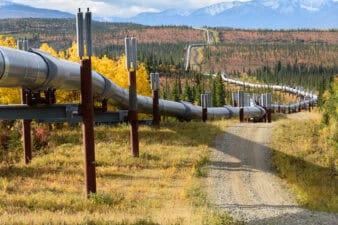The latest dip in crude, which saw it fall to its lowest point in seven months, has cast the spotlight firmly back on the energy patch and deeply indebted upstream energy companies that are battling to survive the prolonged oil slump.
One company that continues to garner considerable attention is Baytex Energy Corp. (TSX:BTE)(NYSE:BTE). It is heavily indebted, and the last time oil fell below the US$40 per barrel mark, it shuttered much of its heavy oil production because it wasn’t economic to keep the spigots open.
West Texas Intermediate (WTI) is hovering around US$43 per barrel, which brings into question the future of upstream oil producers should prices remain at that level or even slide lower over a lengthy period.
Now what?
Baytex’s most critical problem is that its 2017 budget relies upon WTI averaging US$55 per barrel over the course of the year. That forecast emerged from the considerable optimism generated by OPEC’s production cuts, which sparked a recovery in oil.
Despite OPEC and key non-OPEC oil-producing nations agreeing to extend the production cuts, oil has fallen to its lowest level since mid-2017. There are signs that it may remain there or slide below US$40 a barrel. That would be a disaster for Baytex, which needs WTI at US$55 per barrel to be free cash flow positive.
In fact, according to the company’s forecasts, if WTI averages US$50 per barrel or less, then it will be free cash flow negative, which would place greater strain on its already heavily indebted balance sheet. Baytex would also need to significantly slash investments in its drilling and well development program; over the long term, this would cause production to decline further.
We only need to look at its first-quarter 2017 results to see that production declined by almost 9% year over year. That can be attributed to Baytex failing to invest sufficient capital in exploration and development since sharply weak oil prices became the new norm. For a company that has $1.8 billion in debt, this is a significant concern because it will be unable to boost production to generate additional cash flow when oil prices rise.
Nonetheless, Baytex’s position is not as precarious as some pundits believe.
It has a well-laddered debt profile with the first meaningful debt repayment not due until 2021.
Furthermore, the revolving credit facility totaling US$575 million, which falls due in June 2019, can be extended beyond that date by the consent of lenders. That certainly gives Baytex considerable breathing room to wait for oil prices to recover.
It is also worth noting that its Eagle Ford acreage, which is responsible for just over half of its production, has a low breakeven price of a mere US$30 per barrel. This means it remains economic to continue pumping crude from that acreage at current prices and even if crude falls lower.
Baytex’s heavy oil Lloydminster and Peace River assets have breakeven prices of US$40 and US$42 per barrel, respectively, meaning that even with WTI hovering around US$43, those wells are still economic to operate.
So what?
The recent decline in oil certainly is not good news for Baytex, but it is not as dire as some analysts believe. It does, however, underscore the considerable risk that exists when investing in the company.
 Don't Miss AI's Third Wave
Don't Miss AI's Third Wave







